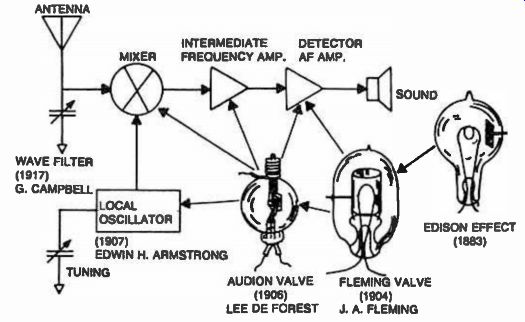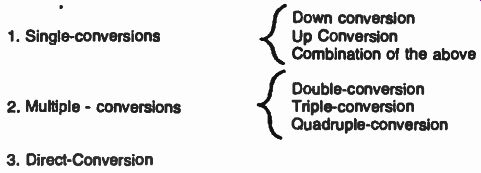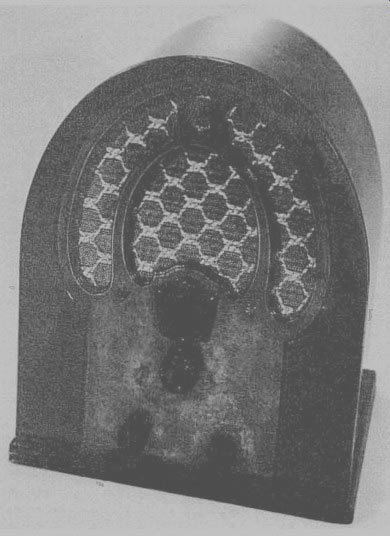The superheterodyne is a type of radio receiver that uses a process in which the incoming signal is mixed with a local oscillator signal in a manner generating new signal components which are equal to the sum and the difference of the original frequencies. One of these products is designated as the intermediate frequency (i-f) and is passed by a tuned circuit which rejects the undesired products as well as the original incoming frequency while still maintaining the information contained in it. This low level signal (caused by the natural losses along the propagation path between the transmitting point and the receiver's antenna) is further amplified before detection takes place.
In the amplitude modulation (AM) mode, the audio frequencies riding on the carrier are detected through the process of rectification, directly from the i-f, while code signals (cw) or single sideband signals (SSB) can be recovered by another mixing process which produces audible heterodynes with the help of a beat frequency oscillator (BFO). In the case of frequency modulation (FM) where the carrier frequency moves around a center point at the rate of the audio frequency, a frequency discriminator or a phase-locked loop are used for detection. The final step after detection is audio amplification.
In the Armstrong superheterodyne, the audion tube performed several functions as shown in Fig. 1. It first acted as a local oscillator which produced high frequency currents of a different frequency than the signal to be received. It was used again as a mixer when this energy was heterodyned with the incoming frequency from the antenna, producing the intermediate frequency which was amplified again by the audion. Amplitude modulation (AM) detection was performed with the help of the Fleming valve, while final audio amplification used the audion again. Today there are several types of superheterodynes, and their mixing schemes dictate their terminology, as shown in Table 1. Also, see Fig. 2.
SINGLE CONVERSIONS
A single conversion receiver can down-convert from the received frequency or up-convert, or both down-convert and up-convert can be used in a single conversion superheterodyne, when the range to be covered is so wide that the intermediate frequency falls somewhere in the middle of it, as in the case of many general coverage radio receivers with an i-f at 5.5 MHz, 9 MHz, or 10.7 MHz. There are advantages and disadvantages in these schemes, as we will see later.

Fig. 1. The impact of earlier inventions on the superheterodyne which
was invented in 1918 by Edwin H. Armstrong.

Table 1. Superheterodyne Receiver Types.
MULTIPLE-CONVERSIONS
Another superheterodyne type is the double conversion, and as a growth from the double conversion, the triple and quadruple conversion.

Fig. 2. The Philco model 81 is an example of an early superheterodyne
receiver, intended for the reception of the broadcast and police bands
in the early 1930s.
DIRECT-CONVERSION (ZERO I-F OR SYNC HROYNE)
The last and the simplest form of superheterodyne is the direct conversion type. We will analyze all these types of radio receivers, and examine their advantages and disadvantages.